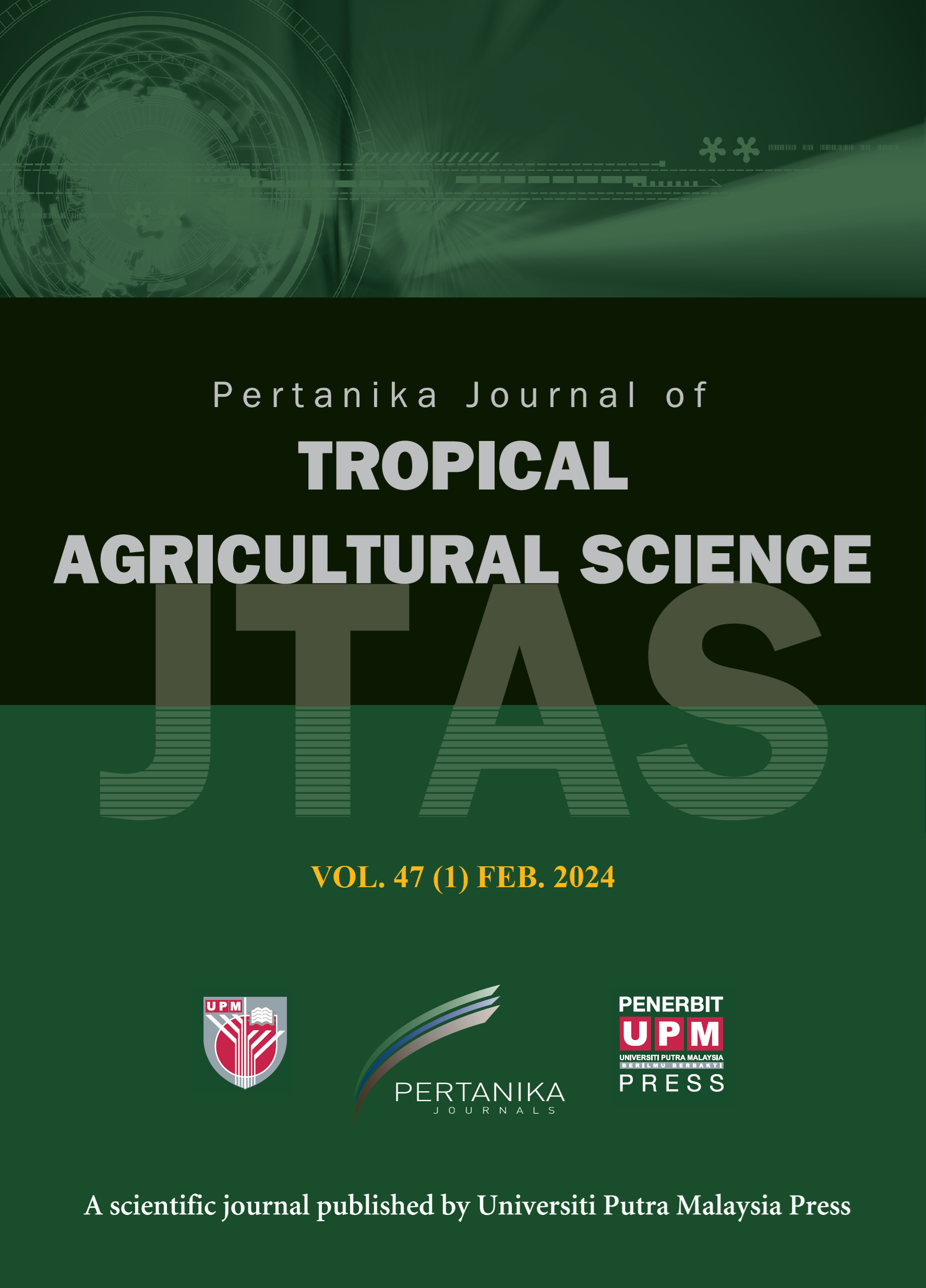PERTANIKA JOURNAL OF TROPICAL AGRICULTURAL SCIENCE
e-ISSN 2231-8542
ISSN 1511-3701
Morphological Changes with Growth in Liza carinata (Valenciennes) Egg, Larva and Juvenile as Distinguished from Those of Liza haematocheila (Schlegel)
Annuar Hassan and Toru Takita
Pertanika Journal of Tropical Agricultural Science, Volume 16, Issue 3, December 1993
Keywords: morphological change, egg, larva, juvenile, melanophore, spawn, distinguishing mark
Published on:
The morphological changes in the egg, larval and juvenile stages of Liza carinata with growth were investigated in reared and wild specimens. L. carinata could be distinguished from L. haematocheila which is likely to spawn concurrently in time and space in the egg, larva, and juvenile stages. The eggs hatch within 45-102h after fertilization in water of 15-21°C, corresponding to the temperature in the spawning ground. A newly-hatched larva averages 2.1 mm in total length. The anlage of the caudal fin appears in the larva of around 3.4 mm and the juvenile stage is attained at a length of 8.9 mm. L. haematocheila is distinguished by its larger size in the egg and larval stages. The melanophores located on the top of the head and the rear end of the tail in L. carinata may also serve as distinguishing marks in the larval stages. The longer extension of the mid-lateral melanophore row in L. carinata distinguishes them in the juvenile stage. The characteristic dorsal ridge in L. carinata (which does not occur in L. haematocheila) appears after a total length of 30 mm is reached.
ISSN 1511-3701
e-ISSN 2231-8542




